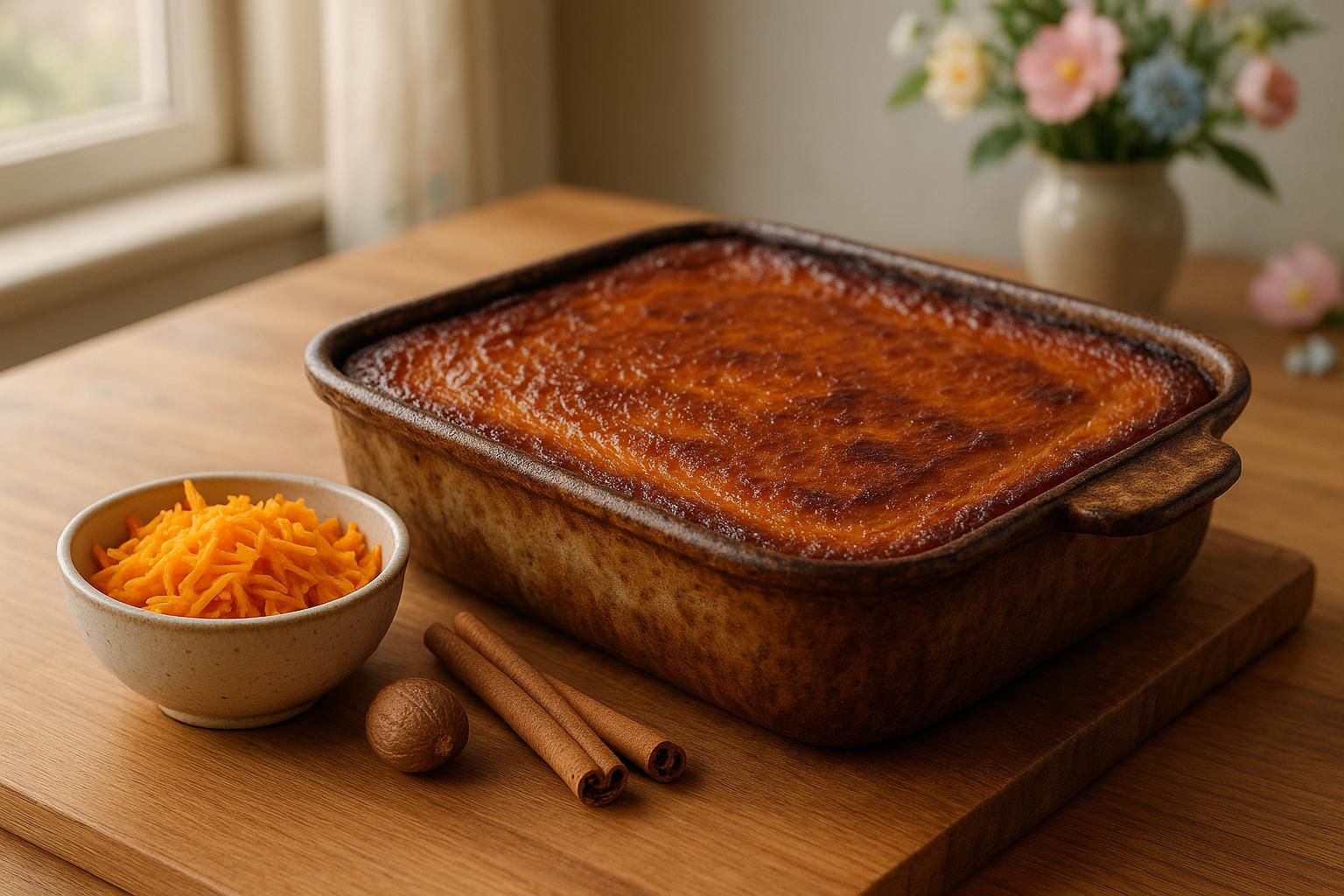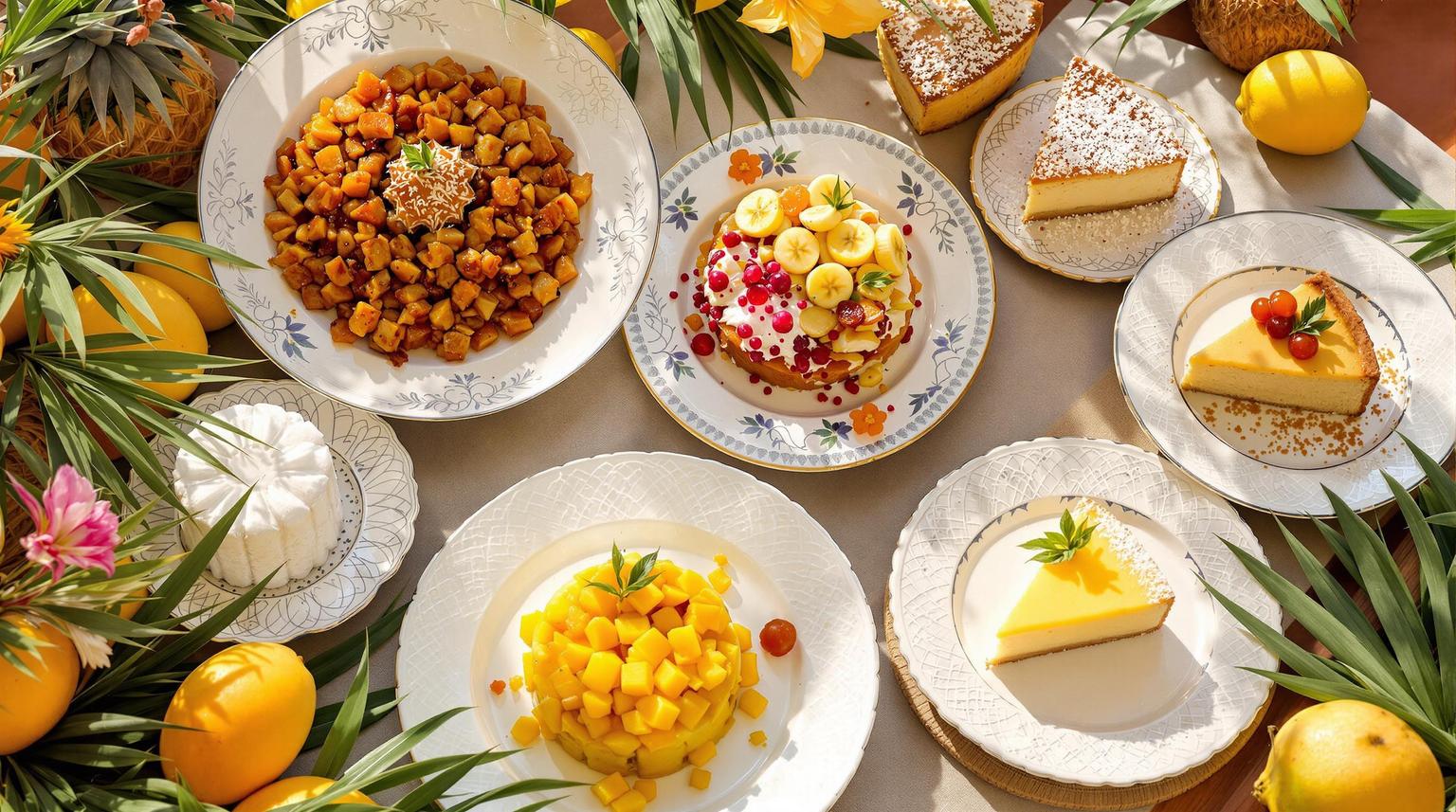Haitian decor transforms dining spaces into immersive experiences by blending vibrant colors, symbolic patterns, and handcrafted furnishings. Here's how:
- Patterns and Symbols: Inspired by Vodou traditions, veve designs appear in wall art, tiles, and textiles, adding cultural depth.
- Color Schemes: Warm earth tones, ocean blues, and bold accents reflect Haiti's natural beauty and heritage.
- Local Crafts: Handwoven baskets, wooden furniture, and metal artwork support artisans and showcase traditional craftsmanship.
This design approach enhances the dining atmosphere, connects guests to Haitian culture, and complements the flavors on the plate.
Dining Room (Salamanje)
Main Design Elements in Haitian Dining Spaces
Haitian dining spaces expertly combine tradition with modern practicality, creating an atmosphere that feels both authentic and inviting. Three main design elements play a central role in shaping these unique environments.
Patterns and Symbols
A defining feature of Haitian dining spaces is the use of veve patterns, which are deeply rooted in Vodou traditions. These intricate designs hold a profound spiritual meaning. As Milo Rigaud explains:
"The veves represent figures of the astral forces... In the course of Vodou ceremonies, the reproduction of the astral forces represented by the veves obliges the lwa... to descend to earth."
Traditional veve designs often include symbols like Papa Legba's crossed axes, the intertwined snakes of Damballah and Ayida Wèdo, and Erzulie Freda's heart motif. Modern Haitian restaurants honor these sacred symbols by incorporating them into wall art, floor tiles, and textiles, ensuring their cultural importance is respected while adding a distinctive aesthetic.
Color Schemes
The color palettes in Haitian dining spaces are inspired by the country's natural beauty and rich heritage. A great example is Boukan, which opened in March 2024. This restaurant uses vibrant art walls paired with darker interiors, creating a dynamic and visually engaging dining experience that celebrates both food and culture.
Common color choices include:
- Warm earth tones: Shades like terra cotta, deep oranges, and rich browns evoke the warmth of the land.
- Ocean-inspired blues: Reflecting the vibrant Caribbean waters surrounding Haiti.
- Natural greens: Symbolizing the lush landscapes of the region.
- Bold accent colors: Reds and yellows add energy and warmth to the overall ambiance.
Local Crafts and Furnishings
Haitian dining spaces shine with the artistry of local craftsmanship. Since 1973, organizations such as Comité Artisanal Haitien (CAH) have played a key role in bringing handcrafted pieces to restaurants, supporting rural artisans and preserving traditional techniques.
Haiti Design Co., founded in 2014 in Port-au-Prince, represents a modern take on this tradition. Collaborating with over 75 local artisans, they create pieces that merge traditional craftsmanship with contemporary styles. Their guiding philosophy is beautifully expressed in the Haitian proverb:
"Men Anpil, Chay Pa Lou" (Many Hands Make the Load Light)
Key elements often found in these spaces include:
- Handcrafted wooden furniture that showcases traditional joinery techniques.
- Metal artwork made from repurposed materials, blending sustainability with beauty.
- Woven textiles featuring traditional patterns that add texture and depth.
- Leather goods and decorative items crafted by skilled local artisans.
Together, these elements celebrate Haiti's rich heritage while enhancing the dining experience, creating spaces where food, culture, and design come together seamlessly.
Impact on Guest Experience
Haitian decor does more than just enhance aesthetics - it shapes how guests experience every meal. By weaving in traditional design elements, it turns dining into a rich, multi-sensory journey, creating a memorable atmosphere that goes beyond the food itself.
Setting the Mood
The moment diners step into a space adorned with Haitian decor, they’re transported to Haiti. Vibrant colors and authentic artwork immediately establish a connection, setting the tone for the experience ahead. Take Zafè'm Caribbean Restaurant in Vero Beach, Florida, for instance. Here, carefully chosen Haitian artwork, including depictions of landmarks like the Citadelle Laferrière - a fortress built by former slaves - welcomes guests and immerses them in Haitian culture.
Group Dining Spaces
Haitian dining traditions emphasize community and celebration, and modern restaurants embrace these values in their layouts. By designing spaces that encourage social interaction, they recreate that "home away from home" feeling. This approach is especially prevalent in family-owned restaurants, where the setup caters to both close-knit gatherings and lively group celebrations.
Some key design features that enhance group dining include:
- Flexible seating that blends traditional tables with communal options
- Warm lighting to create a cozy, inviting atmosphere
- Thoughtful spacing for easy movement without losing the intimate vibe
- Decorative accents that spark conversations and connect guests to Haitian culture
These design choices don’t just enhance the space - they also complement how the food is presented.
Food Presentation
Haitian decor plays a role in making dishes visually striking. The interplay between design and cuisine was notably showcased at Chef Joe "JJ" Johnson’s 2016 pop-up restaurant, Diri, at the Sacred Space in Wynwood. The venue’s elegant design elevated dishes like the Wild Blue Cobia appetizer, served with Grilled Mango and Lychee Chili Broth, making the dining experience unforgettable. Similarly, Miami’s Haitian restaurants serve as cultural centers, blending African, French, Taíno, and Middle Eastern culinary influences to create a vibrant dining scene.
sbb-itb-80c33ff
Design Implementation Guide
Transform your dining space into an inviting haven with authentic Haitian art, furnishings, and collaborations. Here's a guide to creating a dining atmosphere that genuinely reflects Haiti's rich culture and artistry.
Selecting Art Pieces
To bring vibrancy and depth to your space, focus on incorporating traditional Haitian art. Known for its vivid colors and bold storytelling, this art often highlights themes like religious symbols, daily life, and lush tropical landscapes.
- Entry Areas: Use bright, eye-catching artwork to make an immediate impression on guests.
- Dining Spaces: Opt for culturally inspired pieces that depict local markets or community gatherings to evoke a sense of connection.
- Transition Areas: Place smaller, complementary works in hallways or passageways to maintain a cohesive visual experience.
Furniture and Fabric Selection
ACM Designs showcases how eco-conscious materials and handcrafted details can honor Haiti's heritage. When choosing furniture and fabrics, aim for a balance between functionality and cultural authenticity:
| Element | Traditional Feature | Modern Application |
|---|---|---|
| Seating | Natural materials | Sustainable woods paired with comfortable upholstery |
| Lighting | Handcrafted designs | Custom pendants crafted from eco-friendly materials |
| Textiles | Vibrant patterns | Durable fabrics that incorporate traditional motifs |
Working with Haiti-based Artists
Collaborating with local Haitian artists not only enhances the authenticity of your space but also supports the community. Artist Tina Girouard reflects on this process:
"Never intending to appropriate a traditional Haitian art form, my desire was to come to a point of collaboration naturally. Open to sharing our separate ideas, techniques, and cultures, we wanted to achieve that goal spontaneously by working side by side."
To build meaningful partnerships, consider these steps:
- Research and Connect: Attend art fairs or trade shows featuring Haitian artists to discover unique pieces and foster direct relationships.
- Fair Compensation: Ensure artists are paid fairly for their time, effort, and creativity.
- Share Their Stories: Highlight the narratives behind handcrafted works, adding a personal touch that your guests will appreciate.
Conclusion
Haitian decor has the power to turn dining spaces into vivid reflections of Haiti's rich heritage. The combination of bold colors, intricate crafts, and meaningful artwork creates an atmosphere that tells a story. As Chef Nadege Fleurimond beautifully explains:
"I want the imagery to be beautiful. I want the colors. Through my work in food, I've always tried to create an experience around the food. As people of color, we like that. I love the idea of something simple, like having tea, while doing it in a fabulous way. I want people to see Haiti in all its glory, beyond just the mission trips that people come for."
But it’s not just about the visual appeal. Haitian decor builds a bridge between culture and community. Take T'chaka in Oakland, California, for example - its vibrant design elements transport guests straight to Haiti, enhancing the experience of enjoying traditional dishes. This thoughtful mix of style and heritage invites diners to connect with the culture on a deeper level.
For those looking to explore authentic Haitian dining, HaitianFoods.org offers a detailed directory of Haitian restaurants. These spaces not only serve delicious food but also showcase decor that enriches the ambiance and strengthens the cultural connection.
FAQs
How do veve designs enhance the atmosphere in Haitian dining spaces?
Veve designs are a standout feature in Haitian dining spaces, combining artistic elegance with deep-rooted cultural meaning. These intricate patterns, drawn from Haitian Vodou traditions, often adorn walls, tablecloths, and other surfaces, adding a visually captivating element to the decor. Beyond their aesthetic appeal, they reflect a connection to Haiti's spiritual heritage.
By weaving veve symbols into the design, dining areas become more than just places to enjoy a meal - they turn into vibrant experiences that honor Haiti's traditions and history. These designs create a distinctive and unforgettable atmosphere for anyone who steps inside.
How do Haitian artisans contribute to the decor of dining spaces?
Haitian artisans have a gift for transforming dining spaces into something truly special. Through their traditional craftsmanship, they weave Haiti's rich heritage into every piece they create. Whether it's detailed metalwork, colorful textiles, or beautifully crafted pottery, their work adds a layer of authenticity and storytelling to any setting.
These handcrafted items do more than just beautify a space - they help keep traditional art alive and provide meaningful support to local communities. Incorporating these artisan-made pieces into dining areas not only elevates the ambiance but also offers guests a chance to connect with the vibrant artistry and cultural legacy of Haiti.
How do Haitian color schemes enhance the dining atmosphere?
Haitian color schemes are central to crafting a dining space that feels warm and engaging. Bright shades like red, blue, and yellow - often drawn from Haitian traditions and the national flag - infuse the room with energy and cheer. These vibrant tones not only enliven the atmosphere but also create a meaningful connection to Haitian heritage, adding depth to the dining experience.
Pairing bold colors with neutral tones is another thoughtful touch. This contrast helps traditional Haitian art and decor stand out, giving the space a visually striking and dynamic feel. Together, these elements create an inviting setting that sparks conversation, enhances enjoyment, and celebrates the richness of Haitian culture.


